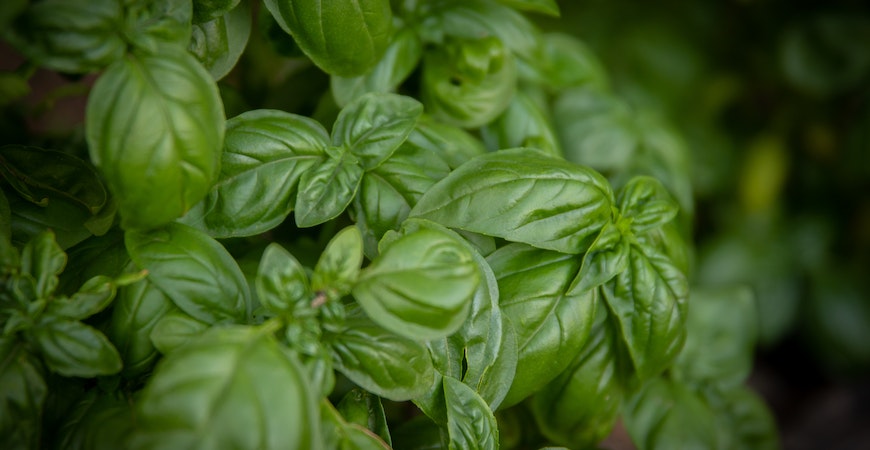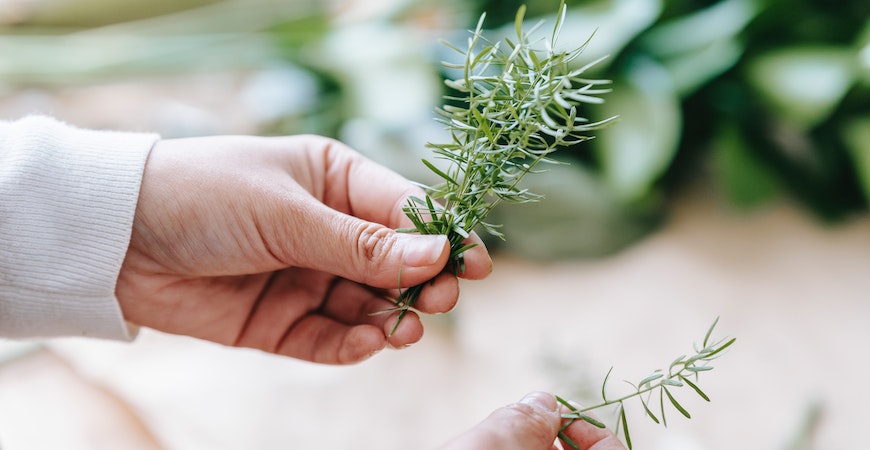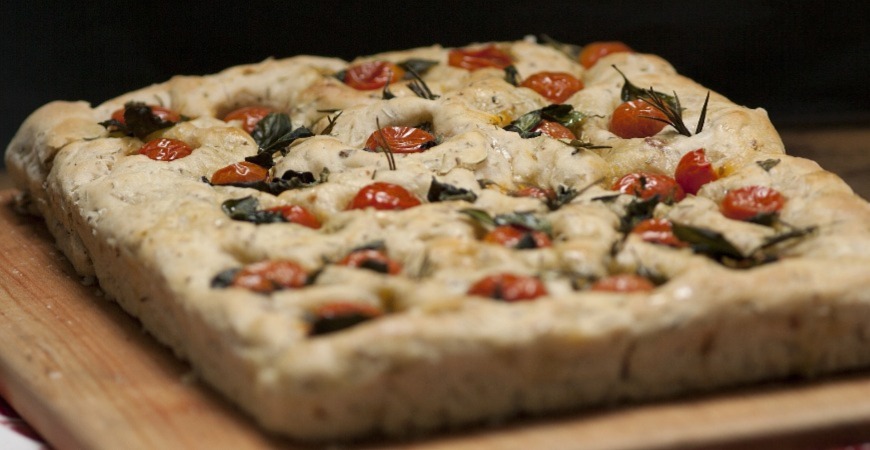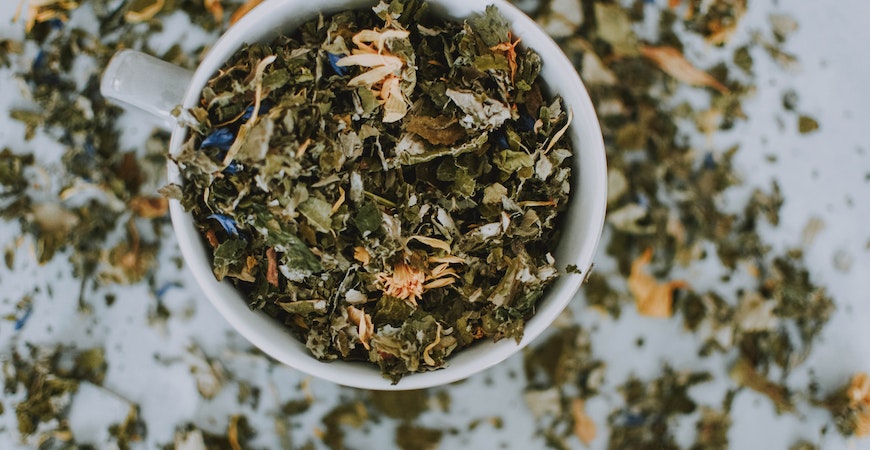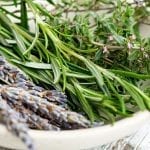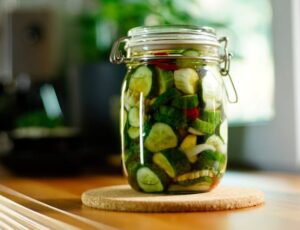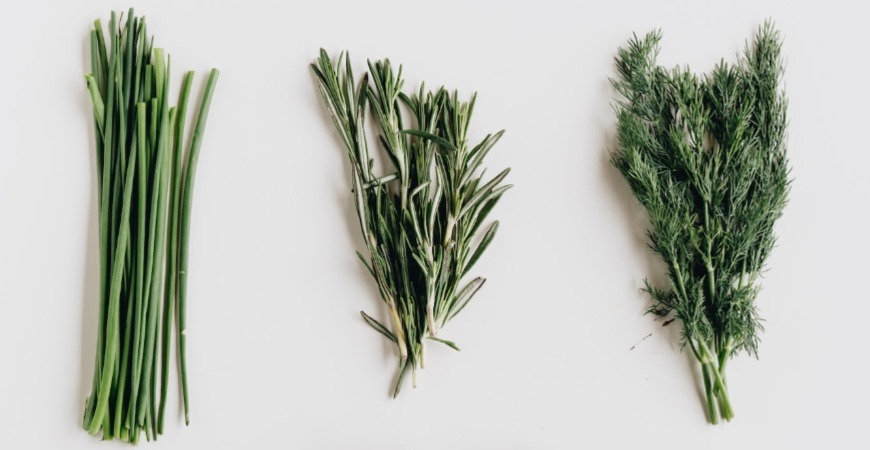
Celebrate National Herb Day the Right Way
It happens year after year: Your friends, family, and neighbors are out painting the town red to celebrate National Herb Day, and you’re left staring at a bunch of browning basil and sagging sage.
Say“No more!” to unfulfilled promises, and instead, check out our list of favorite spring herbs for your garden. We’ll walk you through some of our favorite herbaceous recipes and teach you how to preserve any leftovers for use throughout the year.
So, let last year’s Herb Day be the last you feel left out. A new, herby you is just around the corner!
Our Favorite Herbs To Grow
Fresh herbs are an easy way to pack more flavor punch into your baking and cooking. While dry, store-bought herbs have their place in the kitchen, you’ll notice an immediate boost in your taste buds when you start using your own homegrown varieties.
With that in mind, here are some herbs we plan to plant this spring.
Basil
There’s a lot of competition for the best kitchen scent. But the real battle is for the number two slot because nothing beats the smell of fresh basil.
Basil is versatile. Yes, there’s the classic pesto use case, but it’s also an excellent addition to bread, soups, salads, and even desserts.
Many grocery stores sell basil plants that, when cared for, will supply you with an endless supply of the leafy green.
Basil grows best when it receives six to eight hours of direct sunlight. It can also make do in spots where it only gets partial sun.
Chives
Often mistaken for green onions (which, to add to the confusion, are also referred to as scallions), chives are thinner in appearance and milder in flavor than their Allium cousins.
As an ingredient in your kitchen inventory, you can fit chives into many recipes. As a part of your herb garden, it aids in pest deterrence.
Like basil, chives grow best with abundant sunlight but can tolerate some shade. Chives also require well-draining soil mixed with compost or fertile organic matter.
Oregano
Everyone likely has a shaker of dried oregano in their pantry. After all, it can be used in a variety of culinary scenarios, from Italian to Mexican to your Fourth of July cookout.
But you’ve never truly experienced oregano until you’ve used it as a fresh ingredient. When plucked straight from the plant and sprinkled into your recipe, it adds a bold pepperiness that mellows out as it’s cooked or baked.
Oregano prefers ample and direct sunlight. If you live in a hotter climate, though, keep it in partial shade to avoid sunburnt leaves.
Ideally, the soil should be warm — at least 70 degrees Fahrenheit — before you plant seeds or cuttings from an established plant. So, it may be best to wait to plant once you’re well past the last frost of the season.
Rosemary
Rosemary may look like it has a tough exterior, but once you reach past its evergreen-like appearance, you’ll find an aromatic herb that can jazz up soups, salad dressings, and even cocktails.
Even if you’ve never grown rosemary before, you’ve likely had it in many a Thanksgiving dish. It adds a bitter, earthy flavor with notes of citrus, pine, and pepper.
Like many other herbs on this list, rosemary grows well both indoors and outside. All it really needs to thrive is abundant sunlight and well-draining soil.
They’re also drought-tolerant once they reach maturity. So, it’s generally better to under-water than overwater them.
Sage
The wisdom of sage is it works in baked goods that range from savory to sweet. Use it to spruce up a chicken pot pie or add a touch of earthy spiciness to apple pie.
Sage is often that ingredient that invites the most renditions of the classic inquiry, “What’s that flavor I taste? It’s so good!” So, if your use of the peppery herb has been on a limited scale, now is the time to amp up the number of pinches you’re adding to dishes.
To help sage thrive in your herb garden, make sure it receives full sun. It also pairs nicely with rosemary both inside and out.
Young sage plants require regular watering to ensure sustainable growth. Once they reach full size — which can be between 12 and 30 inches in height — reduce watering to prevent the plant from sitting in wet soil.
Baking With Herbs
If you’re looking to add a special ingredient to your favorite baking recipes, it shouldn’t surprise you that we’re recommending herbs. From bread to pies to roasted vegetables, herbs are that extra something-something that can make your dish sing.
Consider focaccia. This humble Italian flatbread is capable of serving as an herbaceous feast.
Even better, you can mix and match herbs to your delight. While rosemary is a popular ingredient, you can use any of the herbs listed above to create this culinary treat.
So, to turn this year’s National Herb Day into something magical, consider our favorite recipe for focaccia. Feel free to swap in and out your favorite herbs to make it your own!
Of course, herbs add zest and zeal to baked recipes that range from main meals to desserts. For even more inspiration, check out some of our favorite sweet and savory herb-heavy pies.
Preserving Fresh Spring Herbs After Harvesting
While fresh herbs can be the star of the show, preservation is often why we populate our pantries with a dried selection.
Luckily, there are easy ways to preserve your fresh spring herb harvest. This prevents waste and provides access to homegrown herbs all year round.
So, here are some of our favorite fresh herb preservation tips:
- After harvest, rinse herbs in cold water and pat dry with a paper towel.
- To preserve loose herbs for up to a week, place them in a plastic bag and leave the bag in the fridge.
- To preserve sprigs for up to two weeks, place them in a jar with about an inch of water and cover the plant with a plastic bag. Change the water daily for maximum preservation.
- To freeze, place the herbs in a single layer on a cookie sheet and leave them in the freezer. Once fully frozen, place the herbs in freezer-appropriate containers or plastic bags for up to a year.
When using frozen herbs in cooking or baking, there’s no need to defrost. If you’re adding frozen herbs to uncooked food, defrost and drain excess water.
If you’re looking to make your own dried herbs, try these methods:
- Place herbs in a single layer on a cookie sheet and place in an oven at its lowest temperature and with the door slightly open. Flip the herbs occasionally and remove them from the oven once dried and brittle.
- Place the herbs in a single layer between paper towels and microwave in 30-second increments for up to four minutes. Flip the herbs after checking them and replace paper towels if they become too moist.
- In both cases, allow the herbs to cool off before storing them.
Additionally, to air dry, bundle sprigs together tightly but with enough room for air circulation. Hang the bundle upside or place it in a plastic bag and store them in a well-ventilated, dark, and dry place.
Regardless of how you preserve your spring herbs, store them in a container labeled with the contents and storage date.
Celebrate National Herb Day the Right Way
National Herb Day is but once a year. When you celebrate the right way, though, you’ll have fresh herbs available to you every single day.

